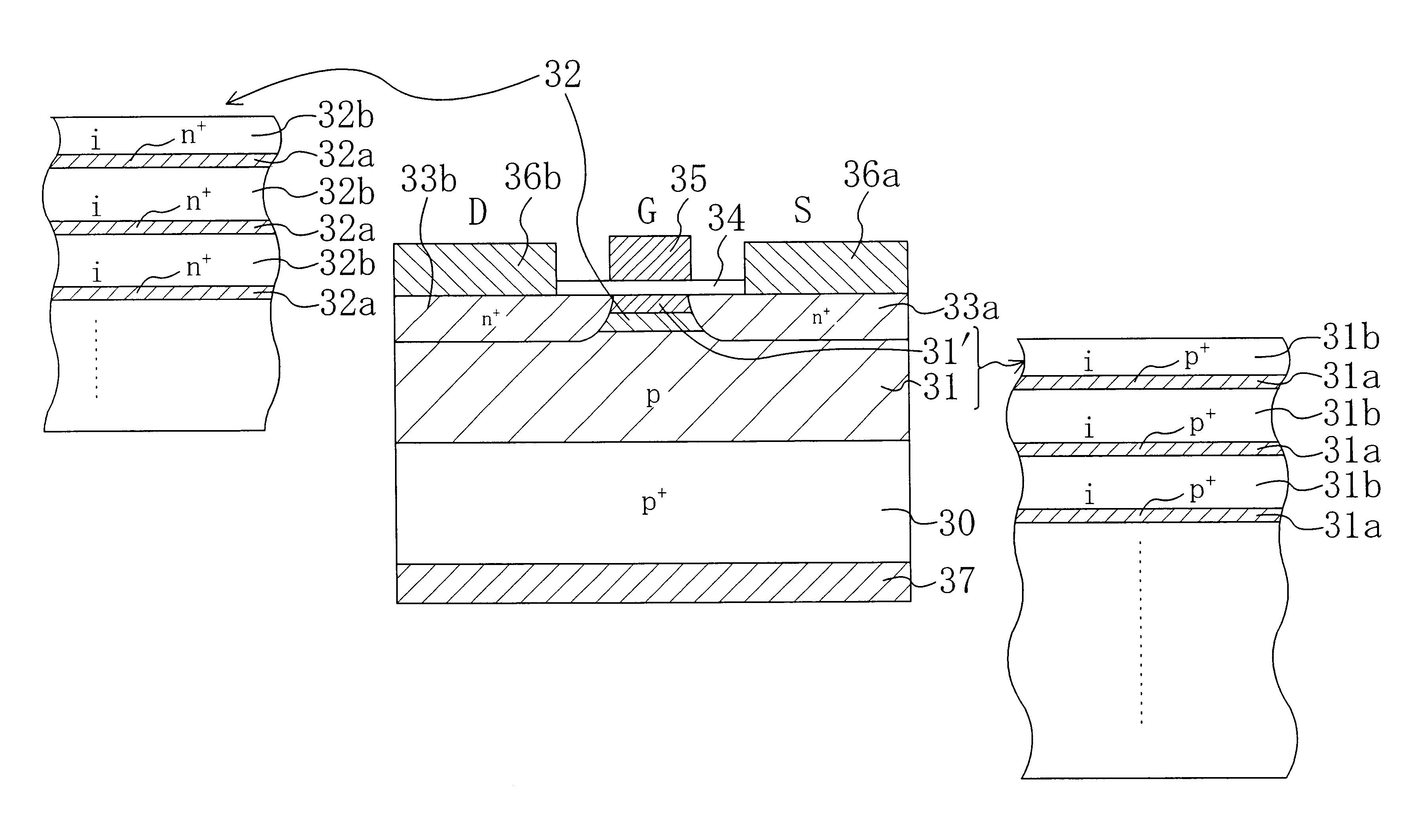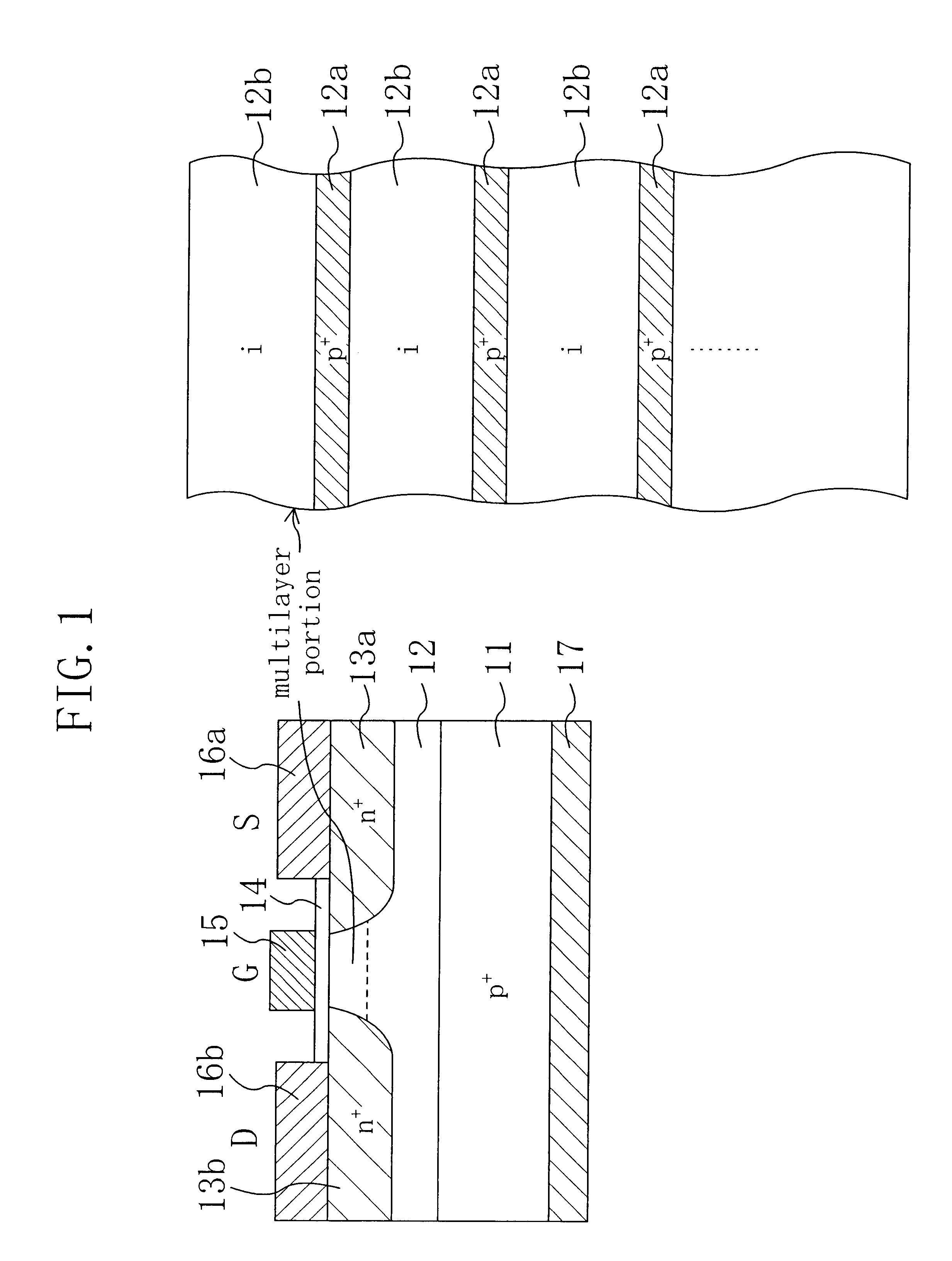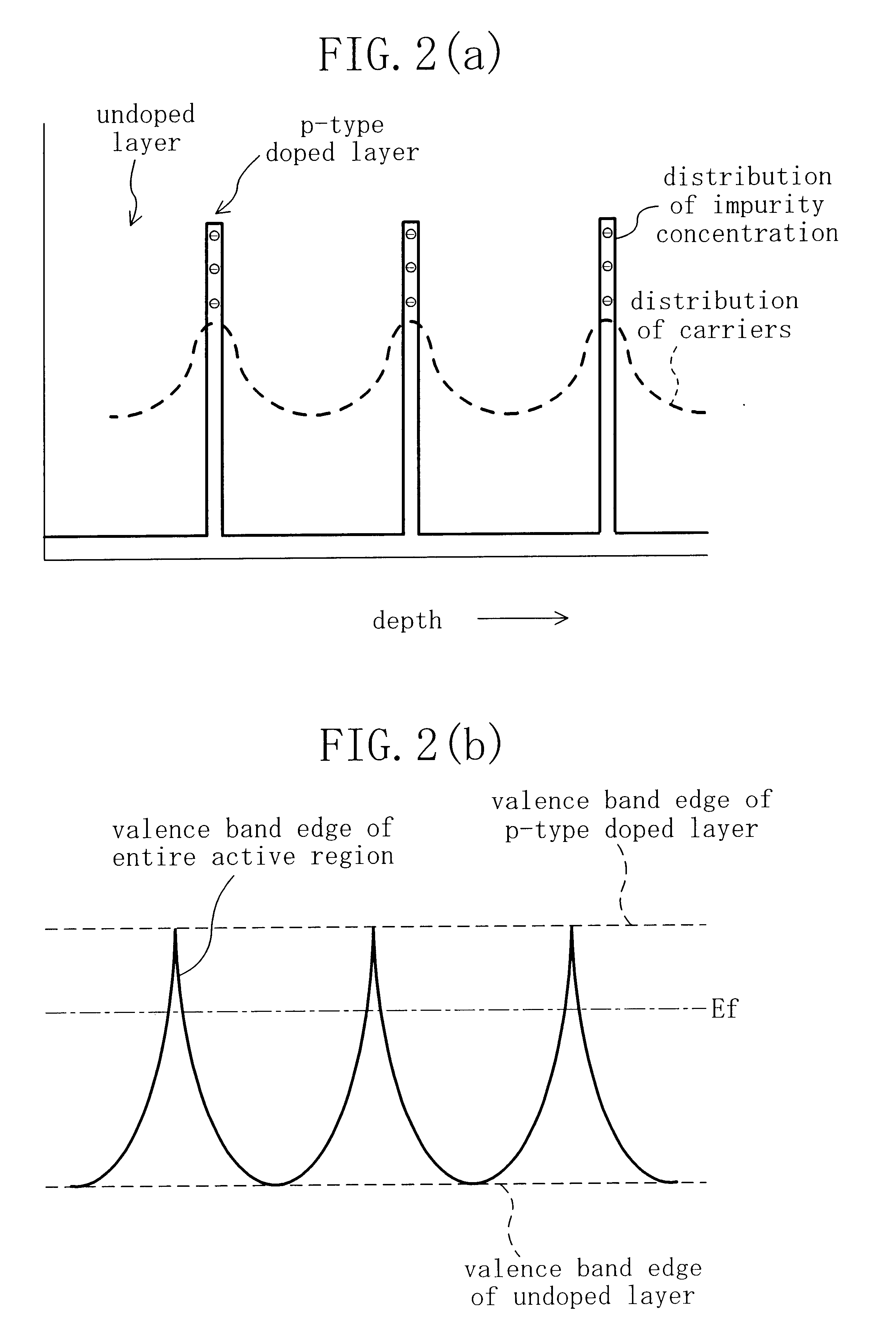Misfet
a technology of mosfet and mosfet, which is applied in the field of mosfet, can solve the problems of deterioration of characteristics such as transconductance and high frequency response, peculiarity of known mosfet, and harmful effects on its characteristics as ideal mos devices, etc., and achieves excellent electronic characteristics, high breakdown voltage, and high speed operation.
- Summary
- Abstract
- Description
- Claims
- Application Information
AI Technical Summary
Benefits of technology
Problems solved by technology
Method used
Image
Examples
example 1
A description will be given herein below to a first example of experiment relating to basic properties of an active region including .delta.-doped layers, which was performed to confirm the effects of the present invention. In this first example, broadly speaking, two types of substrates each having an active region were created. One of these substrates is a sample A, which has an active region formed by stacking a plurality of n-type .delta.-doped layers (heavily doped layers) each having a thickness of 10 nm and containing nitrogen at a concentration of 1.times.10.sup.18 atoms.multidot.cm.sup.-3 and a plurality of undoped layers (lightly doped layers) each having a thickness of 50 nm. The other is a sample B, which has an active region formed by stacking a plurality of .delta.-doped layers each having a thickness of 20 nm and a plurality of undoped layers each having a thickness of 100 nm. To determine basic properties of these active regions, Schottky electrodes were provided on ...
example 2
A second example of experiment in which an active region, including .delta.-doped layers that exhibit a high electron mobility as shown in the first example, is used as a channel region of a MOSFET will be described.
FIG. 21 shows cross-sectional views illustrating the structure of an ACCUFET according to this example. FIG. 21 shows p-type lower active region 61 doped with aluminum at a concentration of about 9.times.10.sup.15 atoms.multidot.cm.sup.-3 and formed on a p-type SiC substrate 60 doped with aluminum (a p-type impurity) at a concentration of 1.times.10.sup.18 atoms.multidot.cm.sup.-3 ; n-type upper active region 62 formed on the lower active region 61 and doped with nitrogen; n-type source / drain regions 63a and 63b formed by implanting nitrogen at a concentration of 1.times.10.sup.18 cm.sup.-3 into the upper and lower active regions 62 and 61; gate insulating film 64 of SiO.sub.2 formed on the upper active region 62; gate electrode 65 made of an Ni alloy film and formed on ...
PUM
 Login to View More
Login to View More Abstract
Description
Claims
Application Information
 Login to View More
Login to View More - R&D
- Intellectual Property
- Life Sciences
- Materials
- Tech Scout
- Unparalleled Data Quality
- Higher Quality Content
- 60% Fewer Hallucinations
Browse by: Latest US Patents, China's latest patents, Technical Efficacy Thesaurus, Application Domain, Technology Topic, Popular Technical Reports.
© 2025 PatSnap. All rights reserved.Legal|Privacy policy|Modern Slavery Act Transparency Statement|Sitemap|About US| Contact US: help@patsnap.com



